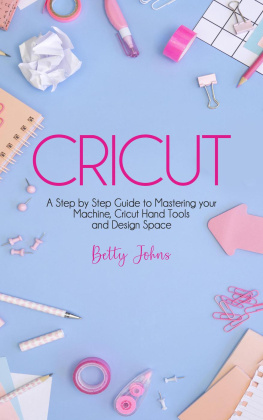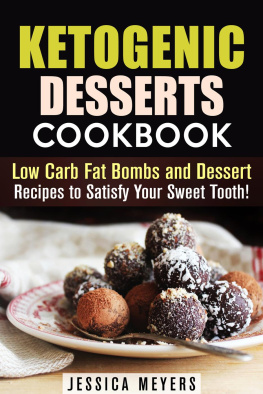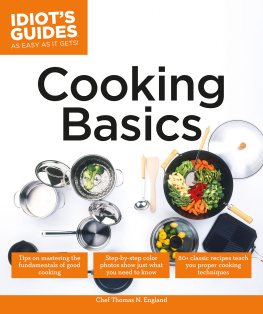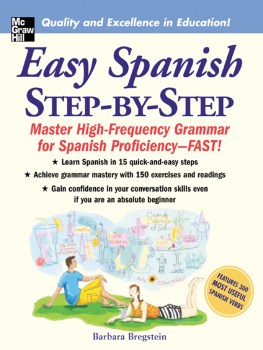Murdoch Books - Mastering the Basics: Desserts
Here you can read online Murdoch Books - Mastering the Basics: Desserts full text of the book (entire story) in english for free. Download pdf and epub, get meaning, cover and reviews about this ebook. year: 2013, publisher: Murdoch Books, genre: Home and family. Description of the work, (preface) as well as reviews are available. Best literature library LitArk.com created for fans of good reading and offers a wide selection of genres:
Romance novel
Science fiction
Adventure
Detective
Science
History
Home and family
Prose
Art
Politics
Computer
Non-fiction
Religion
Business
Children
Humor
Choose a favorite category and find really read worthwhile books. Enjoy immersion in the world of imagination, feel the emotions of the characters or learn something new for yourself, make an fascinating discovery.

- Book:Mastering the Basics: Desserts
- Author:
- Publisher:Murdoch Books
- Genre:
- Year:2013
- Rating:3 / 5
- Favourites:Add to favourites
- Your mark:
- 60
- 1
- 2
- 3
- 4
- 5
Mastering the Basics: Desserts: summary, description and annotation
We offer to read an annotation, description, summary or preface (depends on what the author of the book "Mastering the Basics: Desserts" wrote himself). If you haven't found the necessary information about the book — write in the comments, we will try to find it.
Mastering the Basics: Desserts — read online for free the complete book (whole text) full work
Below is the text of the book, divided by pages. System saving the place of the last page read, allows you to conveniently read the book "Mastering the Basics: Desserts" online for free, without having to search again every time where you left off. Put a bookmark, and you can go to the page where you finished reading at any time.
Font size:
Interval:
Bookmark:
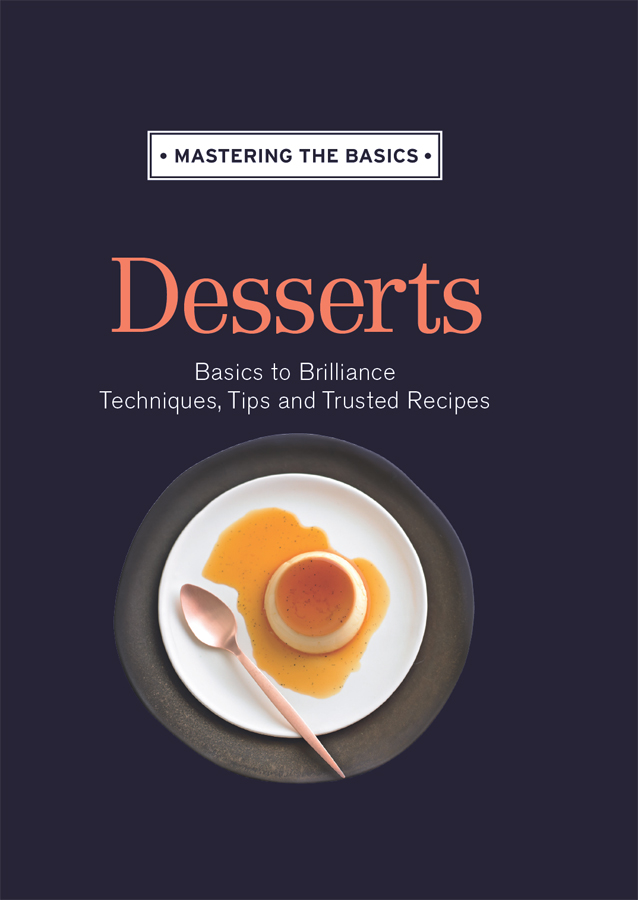


Contents
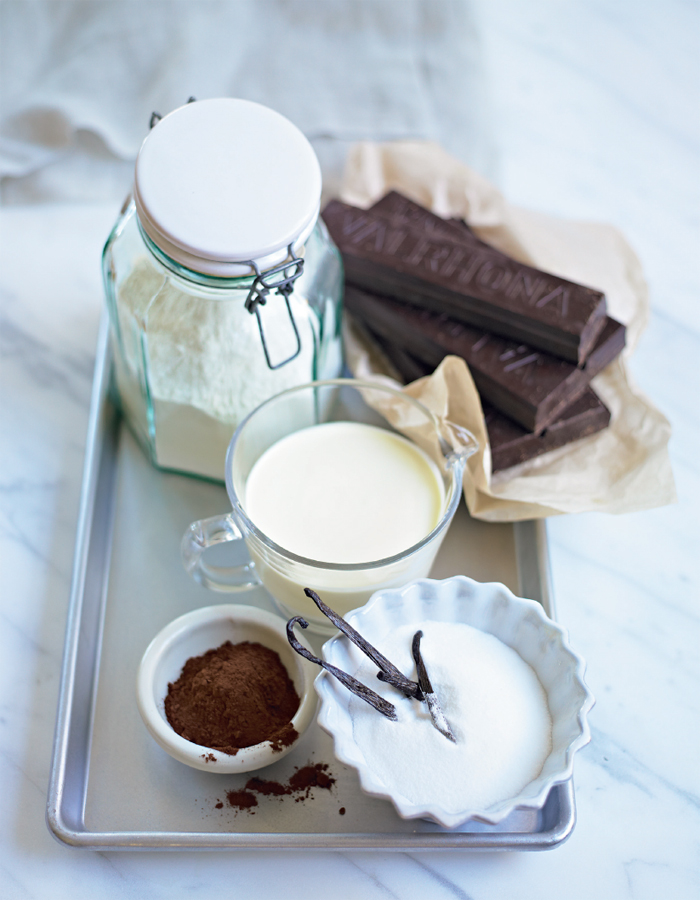
Introduction
Desserts provide the perfect full stop to a meal, whether youre after a soul-warming pudding, the refreshing tang of a frozen dessert or the sheer indulgence of a rich chocolate concoction. Mastering the Basics: Desserts has a sweet ending to complement any main course, from creamy, vanilla-scented baked custard to melt-in-the-mouth peach pie, classic Italian tiramisu to cooling mango sorbet, comforting steamed golden-syrup pudding with lashings of pouring custard to an impressive hazelnut and chocolate meringue torte. Backed up by a comprehensive Basics chapter with useful information about ingredients and equipment, as well as fundamental techniques for dessert making, this collection of over 60 recipes, all accompanied by step-by-step photography, provides the perfect sweet finish for every occasion.

Basics
Common ingredients
Butter is the most commonly used fat when making desserts. It adds flavour, shortness/tenderness and colour. When it is beaten, air is incorporated which, in turn, helps leaven baked goods as they cook. It can also be rubbed into flour or melted and mixed with other ingredients. Unsalted butter is sweeter than salted and gives you more control over the amount of salt in your desserts you can then add as much as you want. If you are creaming butter, make sure it is softened by standing at room temperature for 3060 minutes (depending on the room temperature) before using. If rubbing into dry ingredients, make sure it is well chilled.
Cocoa powder is simply the unsweetened ground powder made from grinding the cocoa solids when the cocoa butter (the fat) is removed from cocoa beans. Make sure you sift it before using to remove any lumps. Sweetened cocoa powder is sold as drinking chocolate. Dutch cocoa is considered the best quality cocoa powder, having a rich and intense flavour and a dark colour.
Cream is used extensively in dessert making. The fat content of cream determines how rich it is and also its whipping characteristics the higher the fat content, the easier it will be to whip and the thicker it will be when whipped (low-fat cream wont whip at all). Double (thick/heavy) cream has a 48 per cent butter fat content and is the thickest type of cream. Pouring cream, also known as whipping or single cream, has a fat content of 35 per cent. Thickened cream, also known as whipping cream, is pouring cream with gelatine added to thicken it slightly and make it more stable. It is ideal for whipping. Sour cream adds a pleasant acidity, as well as richness, to dishes.
Eggs enrich, give structure, bind, lighten, tenderise and add flavour to desserts. Store them, pointed end down, in their original carton in the refrigerator. Always bring eggs to room temperature before using if youre short on time, you can put them in a bowl of lukewarm water for 10 minutes. All of the recipes in this book use 59/60 g (2 oz) eggs.
Flour is used extensively in dessert making and provides the basic structure for the majority of baked desserts. Self-raising flour is simply plain (all-purpose) flour with baking powder added. You can make your own by adding 2 teaspoons baking powder to every 150 g (5 oz/1 cup) plain flour. Sift them together several times before using.
Gelatine is used in many chilled desserts to help them hold their shape. It is a tasteless ingredient and is available in both powdered and leaf (sheet) form.
Honey and golden syrup are used to sweeten desserts. Honey should be selected to suit the type of dessert, such as a delicate floral honey to sweeten a panna cotta. Golden syrup is invaluable in rich hot puddings, tarts and sweet sauces.
Milk forms the basis for many desserts, such as ice creams and baked and stirred custards. Always use full-fat milk unless otherwise specified in the recipe. Buttermilk, a cultured milk, adds a subtle acidity to baked desserts and batters such as pancakes.
Oil is mostly used in dessert making to deep-fry or pan-fry. The oils used generally have a mild flavour, such as sunflower, vegetable and light and regular olive oils.
Sugar adds sweetness, flavour, moisture and tenderness. There are several types of sugars and the most widely used in dessert making is white granulated, caster (superfine) or icing (confectioners). Granulated is the most commonly available, but caster sugar, with its fine grains that dissolve quickly, is a better choice for most desserts. Icing sugar is powdered white sugar and is available as pure icing sugar or icing sugar mixture, which has a little cornflour (cornstarch) added to prevent it forming lumps. Brown sugar, sometimes called light or soft brown sugar, is fine, granulated sugar with molasses added to enrich the flavour. Dark brown sugar has even more molasses added. If you want to substitute brown sugar for white, or vice versa, measure out the same weight (grams or ounces), rather than volume (cups).
Vanilla is used in various forms. Natural vanilla extract and vanilla essence are concentrated flavours derived from vanilla beans. Buy pure essence or extract and avoid those labelled with artificial or imitation as they dont contain any real vanilla. Thick vanilla bean paste is also available and offers a convenient way of adding vanilla seeds to desserts. If using vanilla beans, wash and dry the pod thoroughly after use and place it in a container of sugar to subtly flavour it.

Equipment
Measuring
Careful, accurate measuring, whether by weight or volume, is essential for success when making desserts, especially for those that are going to be baked. Always use one set of measurements when preparing a recipe metric (ml) or imperial (fl oz) by weighing, or measuring by volume (cups).
Measuring cups are used to measure dry or non-liquid ingredients. They are generally available in plastic or metal and in sets of 60 ml (2 fl oz/ cup), 80 ml (2 fl oz/1/3 cup), 125 ml (4 fl oz/ cup) and 250 ml (9 fl oz/1 cup) measures. Spoon the ingredient into the cup until heaped, then, without compressing it, run a flat-bladed knife across the top to level. All cup measures in this book are level, not heaped.
Measuring jugs are used to measure liquids. Look for a glass or see-through jug with clear markings and a good spout. A small, heatproof jug is particularly helpful when dissolving gelatine.
Measuring spoons are used to measure small amounts of both dry and liquid ingredients. They are available in sets that generally include a teaspoon, teaspoon, 1 teaspoon and 1 tablespoon. One teaspoon equals 5 ml in volume. Tablespoons, however, can come in either 15 ml ( fl oz/3 teaspoon) or 20 ml ( fl oz/4 teaspoon) volumes. This book uses 20 ml tablespoons. Check your tablespoon volume and if you are using a 15 ml tablespoon, add an extra teaspoon for every tablespoon of the ingredient specified in the recipe. This is particularly important for ingredients such as baking powder and bicarbonate of soda (baking soda). All tablespoon and teaspoon measures in this book are level use a flat-bladed knife to level ingredients, as for cup measures.
Font size:
Interval:
Bookmark:
Similar books «Mastering the Basics: Desserts»
Look at similar books to Mastering the Basics: Desserts. We have selected literature similar in name and meaning in the hope of providing readers with more options to find new, interesting, not yet read works.
Discussion, reviews of the book Mastering the Basics: Desserts and just readers' own opinions. Leave your comments, write what you think about the work, its meaning or the main characters. Specify what exactly you liked and what you didn't like, and why you think so.


